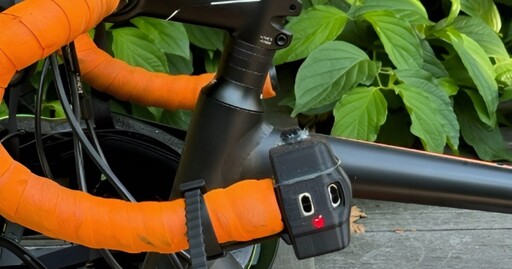Studies have shown that many people don’t commute by bike due mainly to a fear of being hit by cars. A new bike-mounted proximity sensor has been designed to help such folks, by objectively telling them which streets are the safest for cyclists.
I like an open system… but Strava literally has this and all you need is your phone
How does the Strava do this with a phone?
I missed the part where the handlebar sensor was also trying to determine close passes from cars and not just do data logging.
I would assume they are referring to the Strava heat map which will give you an idea of which areas are most popular to cyclists.
There are a few caveats, however.
The first one is that sometimes people forget to turn off their Strava session and so their trip may be recorded while they’re in a car or bus or train.
Another issue that I’ve seen, especially on really busy roads that appear to be popular to cyclists, is that people will be using sidewalks so it gives you the wrong idea of whether the route is actually safe enough.
Thats a good point and yes I was talking about heat map.
I think in order for that to happen (in a bigger city) a large number of people would have to make that same mistake fairly regularly.
With regards to sidewalks, yeah there is no indication that riding a sidewalk is more preferred to riding on the street for a route. That said in most cities / states I believe riding on sidewalks is illegal.
In California there is no state law so whether you are allowed to is determined by the city
I think in order for that to happen (in a bigger city) a large number of people would have to make that same mistake fairly regularly.
I can only speak for publically available hotspots without paid subscriptions like RidewithGPS or Strava, and there are quite a few “cyclists” who are obviously not, showing up on the heatmap.
I think that there needs to be some kind of logic in how they process the data. If a “cyclist” is going 80km/h, the software should assume this isn’t a cyclist. LOL
With regards to sidewalks, yeah there is no indication that riding a sidewalk is more preferred to riding on the street for a route. That said in most cities / states I believe riding on sidewalks is illegal.
This is a grey area, for sure.
In my municipality, riding on the sidewalk is permitted, while all surrounding municipalities in the region ban it.
But even in those cases, I think most cyclists might opt for a sidewalk (illegal or not), just to be safer than on some hostile roads. I don’t blame them, either.
When I see a stretch of road on a cyclist heatmap that I know to be dangerous, I try to zoom in to see if the heatmap path is actually on the road or sidewalk, and usually you can tell that they are riding on the sidewalk.
https://www.strava.com/legal/privacy
Sounds like a reasonable policy. I thought they’re data hoarders at first
The problem with the approach they’re taking, and I do appreciate that they’re making an effort to map out which streets are safer than others, is that it relies on the proximity of cars passing cyclists.
Unfortunately, you only need one idiot who isn’t paying attention to kill a cyclist even on the “safest street”. So maybe this creates a false sense of safety.
Counterpoint: I don’t think any cyclist is going around urban environments with a false sense of safety. We’re all hyper aware that any car could kill us
I would disagree based on person observation.
It’s also possible that the type of person who would use this service, is probably a cautious, aware cyclist.
Did they really have to put the sensor on the end of the handlebars, and not in a more protected area on the bike like right under the seat?
I’ve encountered nothing but problems from kickstands, so that’s the very first thing to go. When I stop my bike for a riding break, if I’m nearby and don’t have to lock it up to a pole or a tree, I just lay my bike on the ground/pavement.
That sensor would be busted within a couple days or less with the way I ride and park. I actually have protective steel caps on the ends of my handlebars to protect my bicycle from my own habit of laying it on the ground at times.
For real, why in a sensitive place on the ends of the bars and not protected under the seat instead? Hell, that would also help protect it from the weather even.
Planned obsolescence? 🤔


